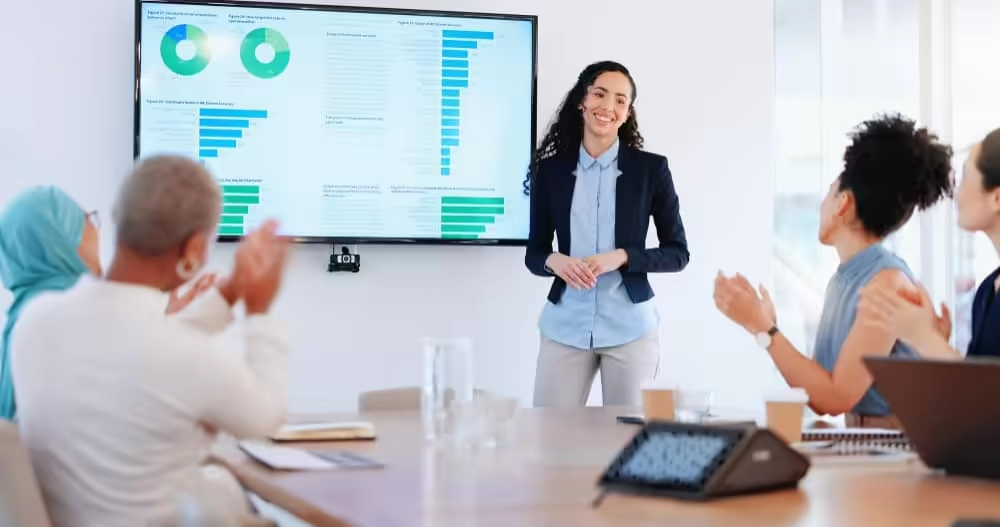In the arena of marketing, the landscape is continually shifting, presenting an onslaught of new challenges, opportunities, and strategies. It’s a world in which the ability to captivate an audience and convey a message powerfully, is a make-or-break skill. Whether you're promoting a new product, laying out a revamped business strategy, or holding an internal team meeting, the way you present your ideas can be the difference between compelling communication and a missed opportunity. One particularly potent tool in any marketing professional's arsenal is the power of effective presentation skills, and in this article, we are going to explore ways you can master them. One such strategy we will touch upon is using slide templates by McKinsey experts, a tool renowned for its sophistication and professional allure.
Understanding the Importance of Presentation Skills
Before we delve into the nitty-gritty of mastering presentation skills, it's imperative to understand their significance in the world of marketing. Strong presentation skills enhance the ability to inform, persuade, and motivate, fostering business relationships and facilitating the decision-making process. According to Harvard Business Review, effective presentations are a blend of engaging storytelling, convincing data, and captivating visuals.
Crafting Your Narrative: The Story Behind the Strategy
Every successful presentation is, at its core, a story. As a marketing professional, your job isn't just to recite numbers and strategies—it's to weave a narrative that frames these elements in a compelling context. Storytelling fosters an emotional connection with your audience, which, according to Psychology Today, plays a significant role in decision-making processes. Construct your presentation as you would a captivating tale, with a clear beginning, middle, and end.
Harnessing the Power of Visual Aids
Even the most eloquent of speakers can lose their audience's attention without the right visual aids. This is where tools like slide templates by McKinsey experts come in handy. Visuals aid in comprehension, retention, and engagement. A study by the Social Science Research Network found that 65% of people are visual learners. Thus, effectively using visual aids can make your presentation more memorable and impactful.
Mastering the Art of Delivery
A message is only as compelling as its delivery. Regardless of the quality of your content, poor delivery can undermine the effectiveness of your presentation. As a marketing professional, mastering your voice inflections, body language, and pacing can significantly enhance your presentations. Renowned speaker and communication expert Julian Treasure suggests in his TED Talk that the foundation of powerful speaking is "HAIL" — Honesty, Authenticity, Integrity, and Love.
Embracing Feedback for Continuous Improvement
The journey to mastering presentation skills doesn't end with a single successful presentation—it's an ongoing process. Consistent feedback, both from yourself and others, is critical in honing your skills. Bill Gates, co-founder of Microsoft, once said, "We all need people who will give us feedback. That's how we improve." Make it a habit to request feedback after every presentation, and use that feedback to continue refining your skills.
Up to this point, we have highlighted the importance of presentation skills, the art of crafting a narrative, the use of visual aids like slide templates, the mastery of delivery, and the embracing of feedback for continuous improvement.
Know Your Audience: The First Rule of Effective Communication
Understanding your audience is a foundational element of successful marketing presentations. The more you know about your audience's needs, wants, pain points, and preferences, the better you can tailor your message to resonate with them. Remember, what engages one audience may not necessarily work with another. According to Forbes, creating more targeted marketing campaigns starts with knowing your audience. Try to grasp their perspectives and anticipate their questions. This understanding will shape your content, delivery style, and even your choice of visual aids.
Active Listening: A Two-Way Communication Street
Active listening is an underrated, yet crucial aspect of presentation skills. While a presentation might seem like a one-way street, the best presenters know the value of fostering a dialogue, rather than delivering a monologue. They understand that a presentation is an opportunity to engage in two-way communication. Active listening fosters engagement, builds trust, and creates an environment conducive to open discussion. As noted in an article on Harvard Business Review, great listeners foster a cooperative conversation where both parties are equally involved.
Embrace Technology: Tools for a Digital Age
Technology has revolutionized the way we present. Tools like Prezi, Google Slides, and McKinsey expert slide templates have broadened the horizons of what's possible in a presentation. For example, dynamic presentations can engage the audience in ways traditional slide decks can't. Don't shy away from utilizing these tools to their fullest potential, but always ensure they serve to enhance your message, not distract from it. For more on this, check out this Forbes article on how technology trends are impacting businesses.
Learning from the Best: Observing the Masters
Studying the methods of skilled presenters can offer valuable insights to apply to your presentations. Steve Jobs, for example, was known for his minimalist slide designs and charismatic delivery. TED Talks, filled with engaging speakers discussing diverse topics, provide a wealth of examples of excellent presentation techniques. By observing these masters, you can identify successful strategies and adapt them to your style. Inc.com features a fascinating article on how Steve Jobs used presentation skills to engage audiences.
Conclusion
Mastering presentation skills is an art, and like any art, it requires practice, patience, and a dedicated approach. From understanding the significance of these skills, crafting a compelling narrative, harnessing the power of visual aids such as McKinsey expert slide templates, mastering the art of delivery, embracing feedback, understanding your audience, practicing active listening, embracing technology, and learning from the masters - every step takes you closer to becoming a more impactful communicator.
Remember, the journey of mastering presentation skills is ongoing. The more you learn, the more you'll realize there's more to discover. Keep honing your skills, keep learning, and remember - the most compelling presentations don't just share information, they tell stories, they engage audiences, and they leave a lasting impact. Embrace the art of presentation, and watch as it transforms your marketing career.



